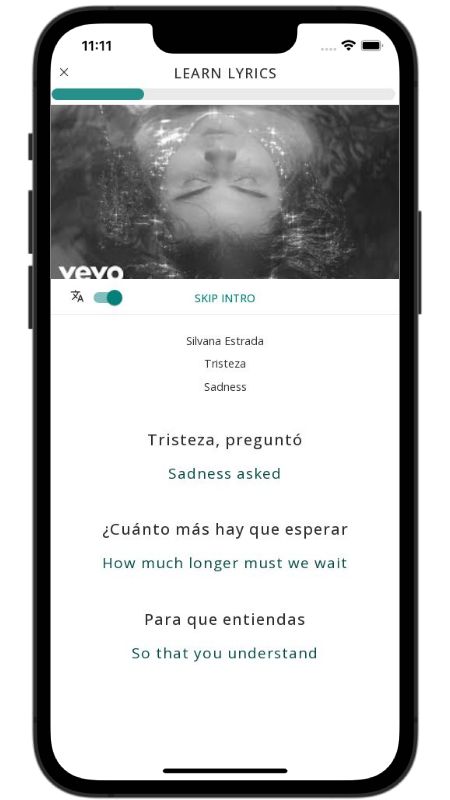Tristeza Lyrics in English Silvana Estrada
Below, I translated the lyrics of the song Tristeza by Silvana Estrada from Spanish to English.
These lyrics have verified word for word translations. Click any lyric word to see the translation and hear the pronunciation!
Sadness asked
How much longer must we wait
So that you understand
That I sing to cry?
I ask you for a sigh
That eases the verb to love
And a cautious kiss
That saves me from missing
That one who's no longer here
And you who don't leave
I ask you once more
Sadness, leave me in peace
I can't remember anymore
How many kisses must we give
For the wind
That it bursts from dancing
If one day I said
That love was going to save me
Sadness, I ask you
Don't change my truth
Of that one who's no longer here
And you who don't leave
I ask you once more
Sadness, leave me in peace
Sadness, leave me in peace
Sadness, leave me in peace
Lyrics and Translations Licensed & Provided by LyricFind
Lyrics © CONCORD MUSIC PUBLISHING LLC
Did you like these lyrics?
Did you know?
In addition to reading lyric translations, you can now learn Spanish with music and lyrics from your favorite artists.
Yes, including Tristeza by Silvana Estrada!
No more boring lessons. You can now learn with engaging and culturally relevant lyrics from the best artists.
Apple and App Store are trademarks of Apple Inc.
Google Play and the Google Play logo are trademarks of Google LLC.
MORE SILVANA ESTRADA
























